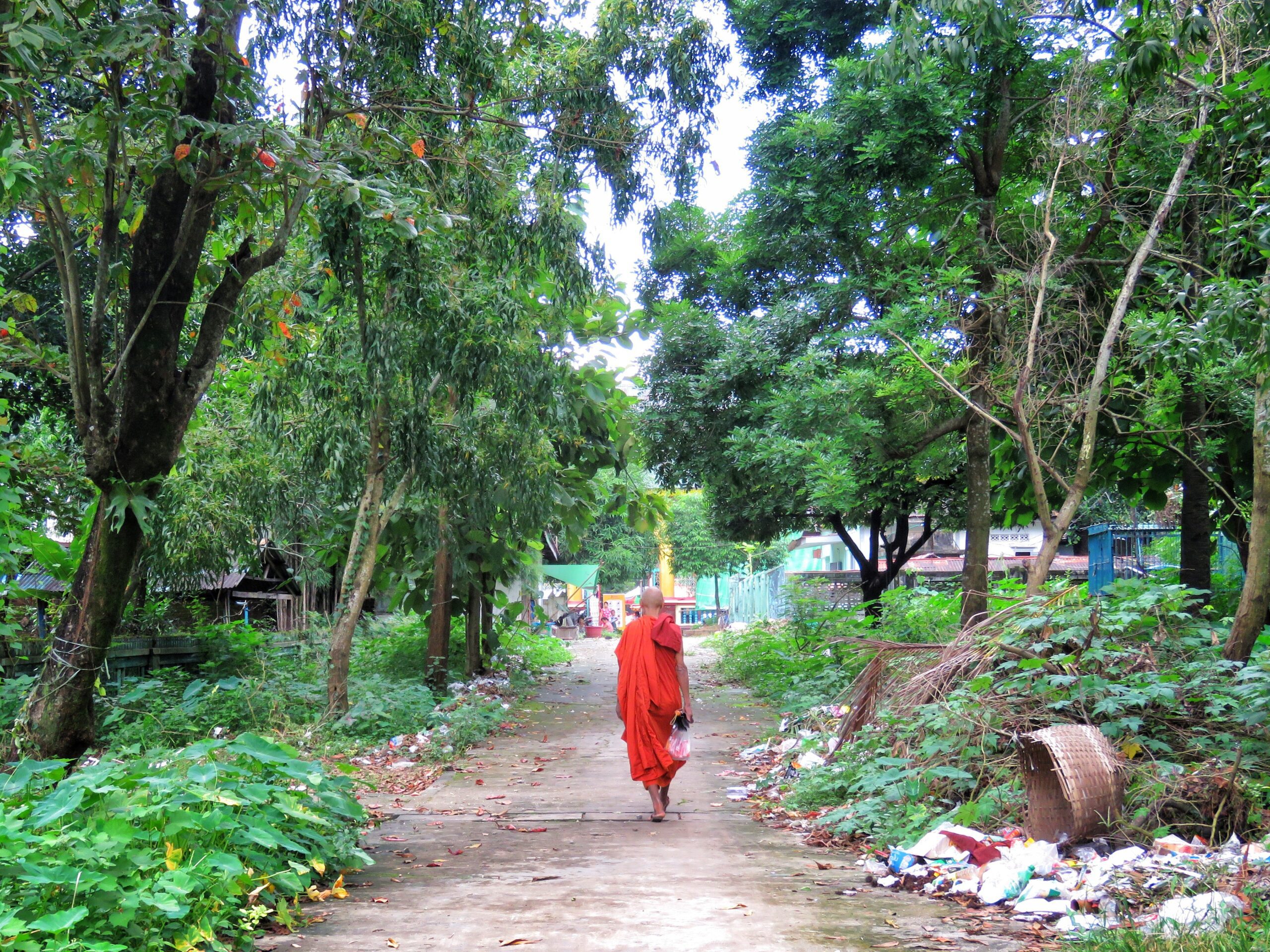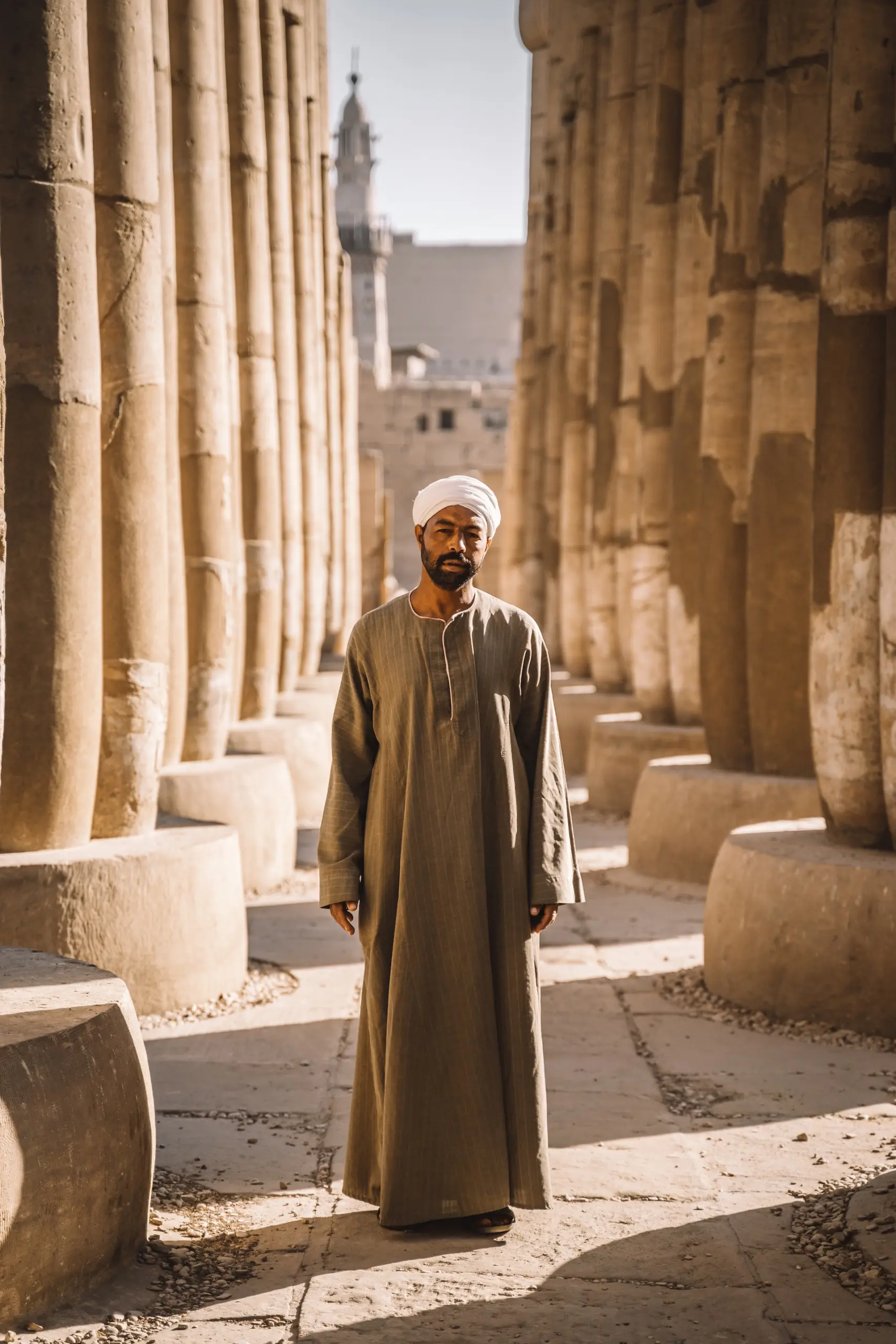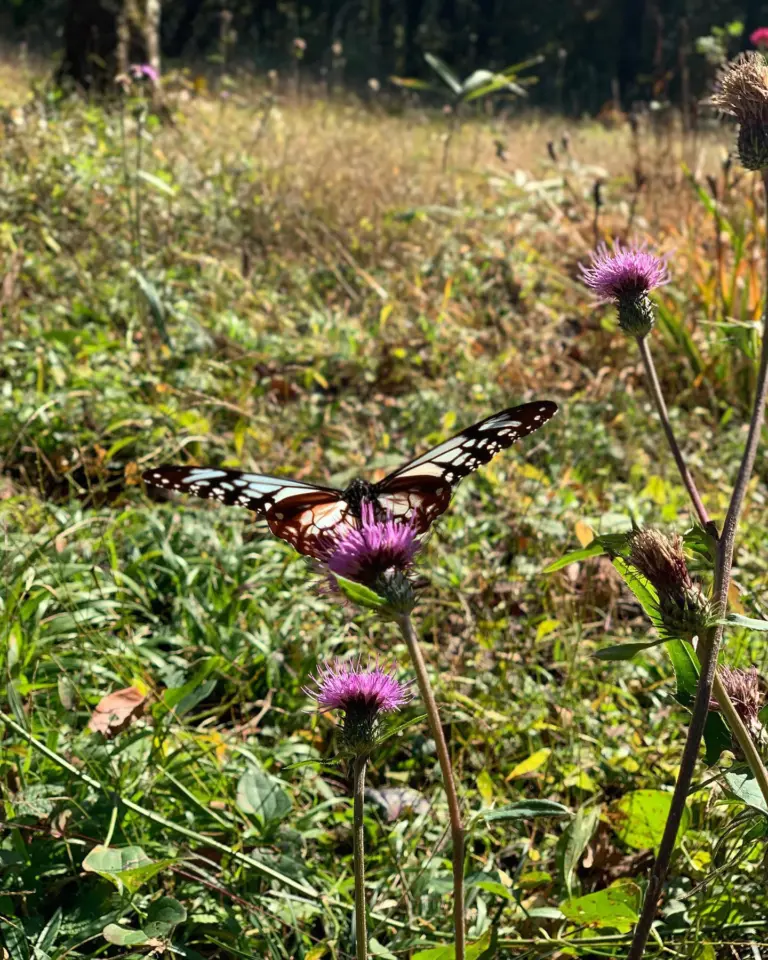Sometimes, the most profound journeys are the ones that take us not just across the world, but deep into the heart of what it means to be alive.
A pilgrimage isn’t about the miles traveled; it’s about the moments that take our breath away, the kind that linger in our memory long after our feet have stopped moving.
It’s about seeking answers to questions we’ve barely dared to ask out loud, finding connections in the quiet spaces, and discovering a sense of peace in the rhythm of our steps.
This kind of journey invites us to strip away the noise of daily life and listen to the whispers of our own hearts.
It’s a chance to step out of the routine and into the extraordinary, to see the world and ourselves in a new light.
Whether it’s a path walked by millions or a road less traveled, a pilgrimage is the beauty of the search, the courage it takes to ask big questions, and the strength we find in seeking the answers.
In this article, we’re exploring why stepping out on a pilgrimage can be one of the most rewarding experiences of our lives. It’s not just about the destinations we reach, but the insights we gain and the ways we grow along the way.
Table of Contents
Toggle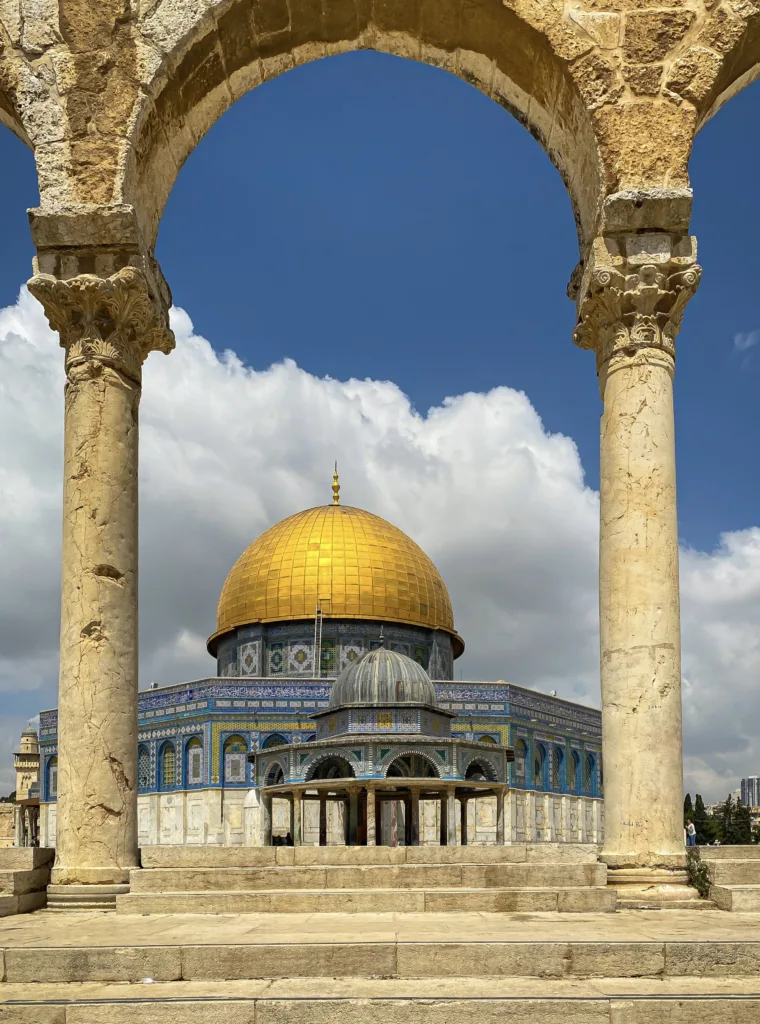
What is a Pilgrimage?
At its heart, a pilgrimage is a journey with purpose, a voyage embarked upon not just through the landscapes of the world but through the landscapes of the soul.
It’s an ancient tradition, as old as humanity’s quest for meaning, where the destination holds spiritual or personal significance.
But ask anyone who’s set their heart on such a path, and they’ll tell you: a pilgrimage is so much more than reaching a sacred site. It’s about the journey itself—the challenges faced, the insights gained, and the transformation that occurs along the way.
A pilgrimage invites us to pause, to step away from the rush and demands of our daily lives, and to walk, literally and metaphorically, towards something greater. It doesn’t have to be a grand undertaking ala Journey to the West style.
Rather, it’s an opportunity to reflect on our lives, to ponder deep questions, and to seek answers or peace. For some, it’s a journey to connect with the divine, to walk paths hallowed by faith. For others, it’s a quest for healing, a way to honor a memory, or simply a means to understand themselves and the world around them on a deeper level.
What makes a pilgrimage unique is its intentionality. It’s not a trip taken on a whim but a deliberate choice to seek out growth, healing, and connection.
In a world that often values destinations over journeys, a pilgrimage reminds us of the power of the latter. It teaches us that the steps we take matter, that the moments of quiet beauty and challenging ascents alike shape us, and that sometimes, the act of searching is itself a form of finding.
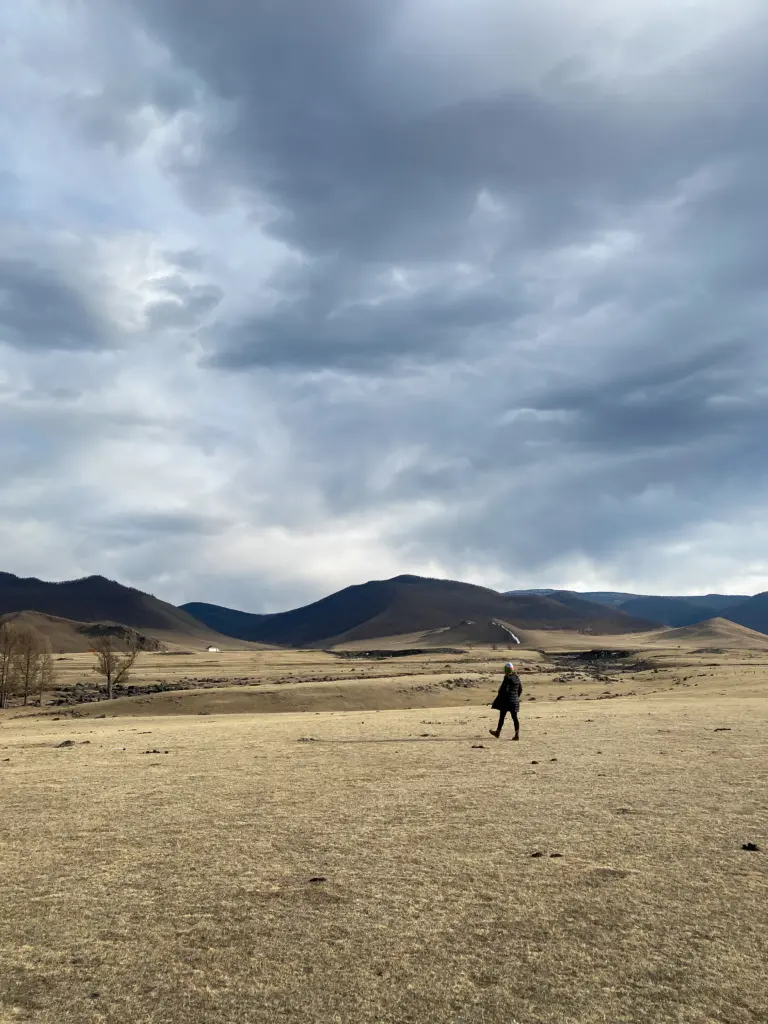
Difference Between Traveling & Pilgrimage
While both traveling and going on a pilgrimage involve leaving our familiar surroundings to explore new places, the essence of these journeys lies not just in their outward paths but in their inner intentions.
Traveling often seeks to satisfy our curiosity about the world, to relax, or to experience new cultures, landscapes, and cuisines. It’s about adventure, discovery, and sometimes escape, offering a break from the routine of daily life. We travel to see, to learn, and to enjoy, moving from place to place, collecting memories and experiences.
A pilgrimage, however, is a journey of a different kind. It’s travel with a deeper purpose, a voyage not just across the earth but into the depths of our own hearts. Touching on the realms of spiritual travel and mindful travel, even. The destination of a pilgrimage is usually a place of spiritual significance, chosen for its sacredness or its connection to profound personal or cultural narratives.
But more than the place itself, it’s the intention behind the journey that defines a pilgrimage. Pilgrims set out not just to see a new place but to experience a transformation within themselves. It’s a journey undertaken in search of spiritual growth, healing, or a deeper understanding of life and one’s place in it.
The rhythm of a pilgrimage is often slower, more reflective. It invites moments of silence, contemplation, and connection with the divine or with the deeper aspects of oneself. Unlike travel, which can be a journey for the senses, a pilgrimage is a journey of the soul.
It asks us to look inward as much as outward, to find meaning in the journey itself, and to return not just with souvenirs but with insights and a renewed spirit.
Why You Should Go on a Pilgrimage
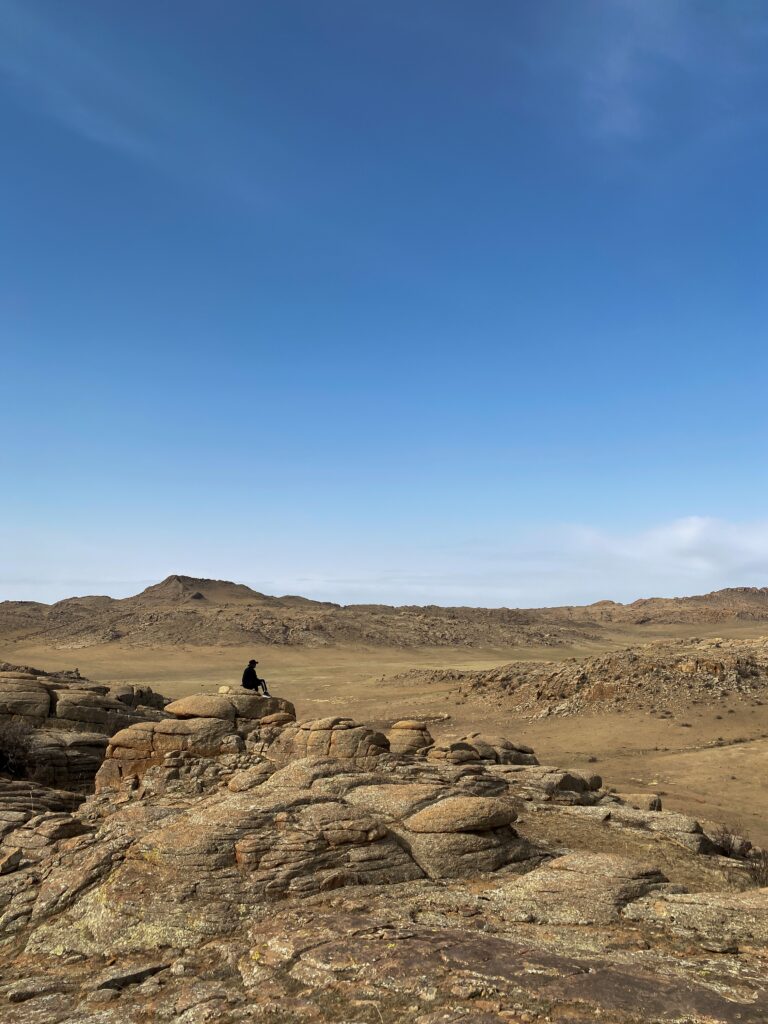
1. Finding Yourself
In the constant rush of our daily lives, filled with endless tasks and the noise of technology and expectations, it’s easy to lose touch with the core of who we are.
Amidst the roles we play and the masks we wear, the true self whispers quietly, yearning to be heard and understood.
A pilgrimage offers a precious pause from this tumult, a solitary journey into the vastness of both the world and our inner landscapes. It’s a chance to strip away the superfluous, to confront the raw and real reflections of our soul amidst the silence that such a journey affords.
Walking a path that countless others have trodden in search of meaning and transformation, we find a unique solace in the rhythm of our steps and the quiet of our thoughts. The journey itself, with every step taken, acts as a mirror, reflecting not only the external beauty of our surroundings but also the inner beauty of our most authentic selves.
It is in the simplicity of the pilgrimage where we can truly ask ourselves—who am I beyond the confines of my everyday life?
The challenges we encounter along the way, the moments of discomfort and doubt, are not merely obstacles; they are teachers. Each trial on the path offers a lesson in resilience, a test of our spirit, and a chance to shed the layers that no longer represent who we are or who we wish to become.
It is through these trials that we discover our true strength, our deepest values, and our capacity for love and compassion.

2. See the Sacred Sites
To witness the sacred sites of the world is an experience that transcends sightseeing. It’s a journey deep into the heart of spirituality, history, and personal significance.
These sacred sites, whether it’s Machu Picchu, Dome of the Rock or the Himalayas, stand as physical manifestations of human faith, devotion, and quest for understanding across ages and cultures.
Visiting these places allows us to step into a continuum of belief and tradition, connecting us with the countless souls who have come before in search of wisdom, solace, and connection.
There’s a profound sense of continuity in walking paths worn by the feet of pilgrims over millennia, in touching stones that have been caressed by hands lifted in prayer, and in breathing in the silence that has absorbed centuries of contemplation.
This journey to sacred sites is also a dialogue between the past and the present, offering insights not only into the spiritual practices and artistic achievements of ancient peoples but also into our own place within this vast history of human endeavor.
It’s an opportunity to witness the expressions of faith that have shaped civilizations, influenced art and architecture, and inspired countless individuals to acts of greatness and humility.
Moreover, the experience of being physically present at these sites can evoke a powerful emotional and spiritual response. There’s a certain magic in standing in the same spot where history was made, where prayers have been offered up for generations, and where the tangible meets the transcendent.
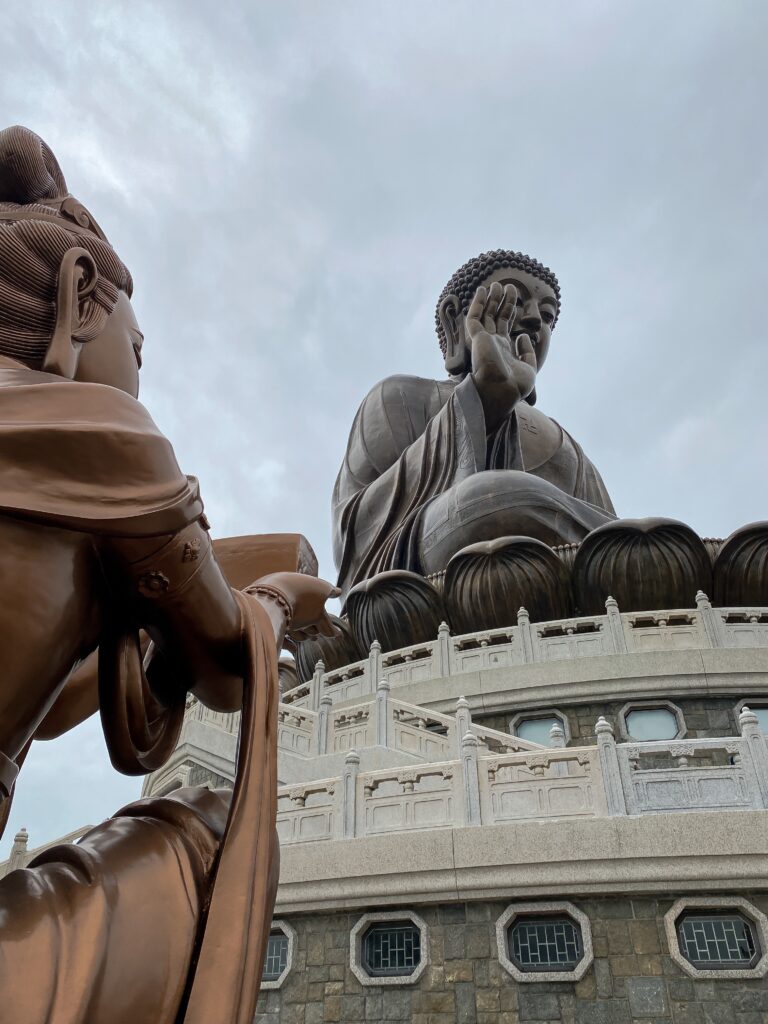
3. Connect to the divine
Embarking on a pilgrimage with the intention to connect to the divine is a deeply personal journey, not confined to any single faith; rather, it is a universal quest that speaks to the heart of human existence.
The act of setting out on such a journey is, in itself, an expression of faith—a tangible step towards the intangible, a physical manifestation of the desire to deepen one’s relationship with the divine.
The external journey mirrors an internal one, where each step forward on the path is also a step deeper into the self, peeling away the layers of ego and noise to reveal the essence within.
For many, the pilgrimage is a conversation—an ongoing dialogue with the divine, where questions are posed, answers are sought, and, often, where the beauty lies in the seeking itself rather than in the answers found. It’s a journey that encourages humility, patience, and openness, qualities that foster a deeper connection to the divine.
The experiences along the way, from the challenges of the journey to the moments of unexpected beauty, are seen as encounters with the divine. They serve as reminders of the presence of something greater than ourselves, guiding us, challenging us, and comforting us in turn.
These encounters, whether they come in moments of awe at the beauty of creation or in the kindness of strangers met along the way, affirm the sacredness of the journey and the presence of the divine in the mundane.
To connect to the divine on a pilgrimage is to acknowledge the sacredness of the journey itself. It’s an acknowledgment that the path we walk is hallowed ground, made so by our intentions and by the presence of the divine with us every step of the way.

4. Searching for Meaning and Purpose
In the vast expanse of our lives, there lies a deep-seated yearning for something more— a quest for meaning and purpose that transcends the superficial layers of existence.
This search is as old as humanity itself, a fundamental drive to understand our place in the universe, to uncover the why beneath the what of our lives.
A pilgrimage offers a unique and profound avenue for this exploration, providing a physical and symbolic journey that mirrors the internal quest we all face.
Setting out on a pilgrimage in search of meaning and purpose is an act of courage. It’s a declaration that the answers we seek might not be found in the comfort of the familiar but along the paths less traveled, in the silence of ancient sacred sites, under the canopy of the stars, or in the eyes of a fellow pilgrim.
This journey is less about the destination and more about the transformation that occurs within as we step out of our ordinary existence into the realm of the extraordinary.
The act of walking, of physically moving towards something, is a powerful metaphor for the internal journey. Each step is a movement away from the known towards the unknown, from certainty to questions that have no easy answers.
It’s in this space of vulnerability and openness that we often find the insights and revelations we are searching for. The pilgrimage becomes a canvas upon which our deepest questions about life, purpose, and our own potential are painted in broad strokes of experience and reflection.
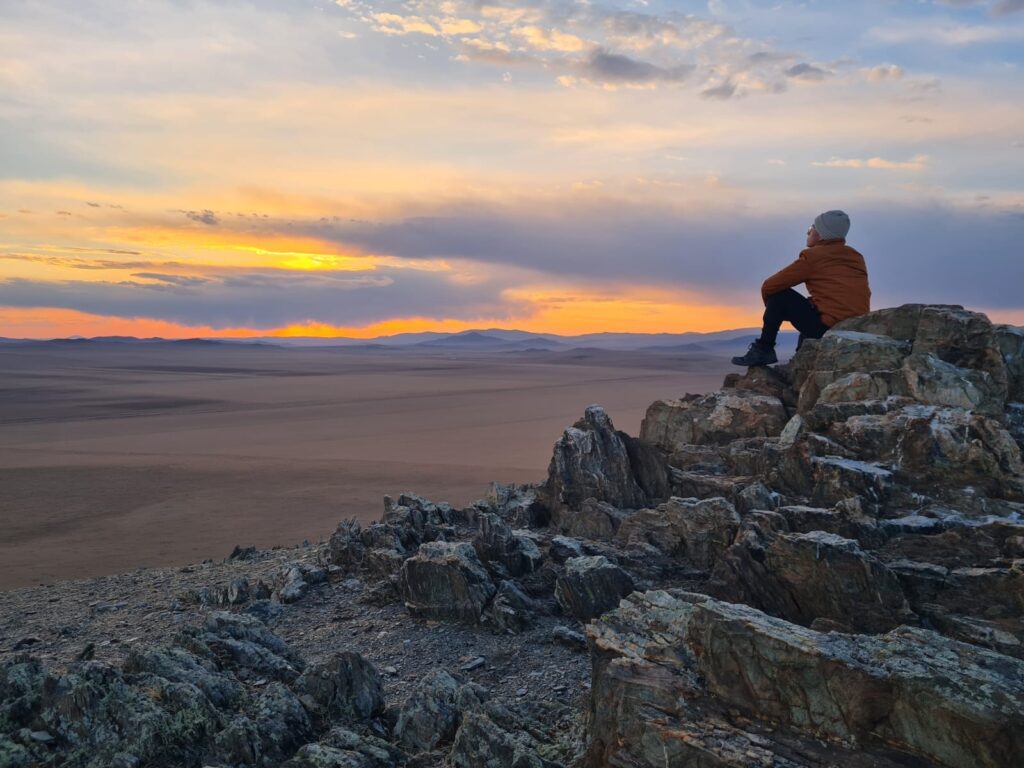
5. Widen Your Horizons
As you navigate the paths trodden by seekers of ages past, you encounter landscapes that whisper the stories of millennia, cities that breathe history, and sacred sites that pulse with the spiritual fervor of the countless souls who have sought solace and enlightenment within their embrace.
These encounters are not merely sights to be seen but experiences to be lived, each offering a lesson in the diversity and complexity of human belief and expression.
This journey challenges you to confront your preconceptions and biases, to ask questions with an open heart, and to listen deeply to the answers offered not just in words but in the silence between them. It is in this space of openness and humility that true understanding begins to blossom.
You learn that wisdom is not the sole province of any one culture or faith but is woven throughout the shared story of humanity.
The people you meet along the way become mirrors reflecting back to you aspects of yourself previously unseen. Conversations enrich your perspective, offering glimpses into lives and worldviews dramatically different from your own. These interactions, marked by the shared vulnerability of the journey, foster a sense of connection and empathy that transcends language and creed.
Returning from a pilgrimage, you find that the horizons of your understanding have been irrevocably expanded. The journey has not just altered your perception of the world but has transformed the way you see yourself within it.
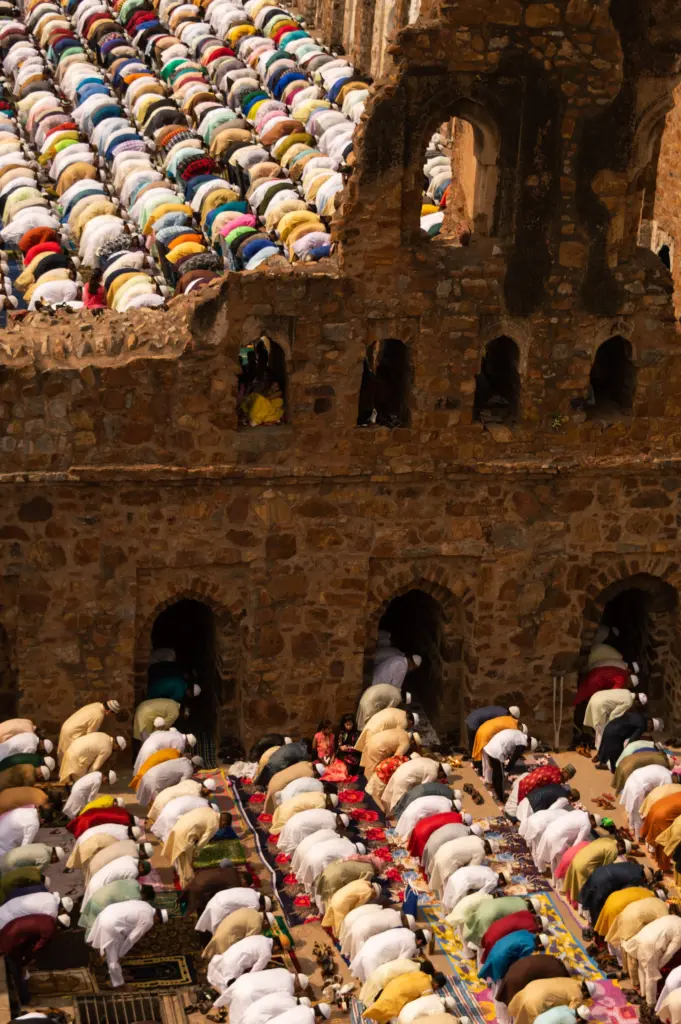
6. Get Inspired
A pilgrimage has the unique power to inspire, fueling the spirit with new vigor. This inspiration comes not only from the sacred sites themselves, but also from the profound dedication and faith of others encountered along the way.
I don’t really subscribe to any belief system, but I would be lying if I said I wasn’t touched or inspired by the faith of the Muslims, Christians, and Jews when I visited Jerusalem. The syncretic worship of the Hindus and Buddhists in Nepal also left an indellible mark on my being, it’s simply awe-inspiring to see devotion in action.
Observing the depth of commitment others have to their spiritual paths offers a window into the universal quest for understanding and connection. It’s a reminder of the power of faith to guide, sustain, and uplift.
Such encounters challenge us to reflect on our own beliefs, to find common ground in the shared human experience of seeking, and to appreciate the beauty and richness of diverse spiritual expressions.
This inspiration drawn from a pilgrimage is not fleeting; it transforms. It can shift the way we view the world, encourage us to embrace our journey with a renewed sense of wonder and commitment, and inspire us to live more fully in alignment with our deepest convictions.
The faith and devotion of others, even those of different religious traditions, become beacons of possibility, showing us the myriad ways to navigate our existence with grace and intention.
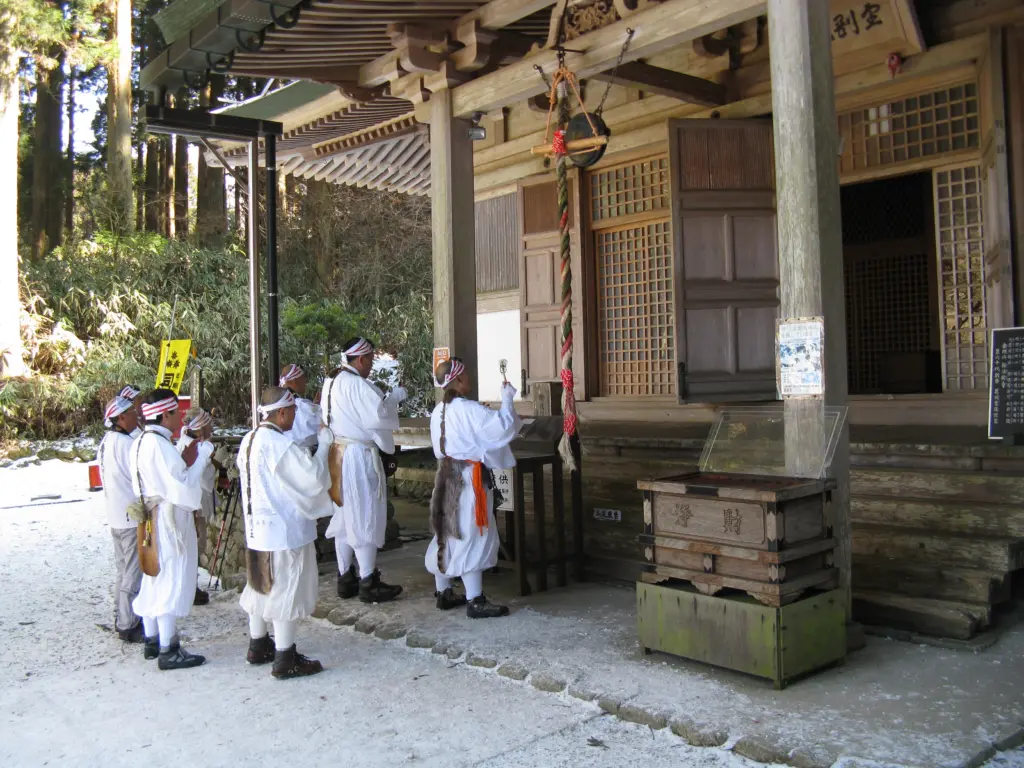
7. Experience Shared Humanity
The pilgrimage journey is a profound reminder of our shared humanity, a deeply moving experience that transcends cultural, religious, and national boundaries.
In the act of walking the same paths as those who have sought meaning before us, we are reminded that, at our core, we all share the same hopes, fears, and desires.
The pilgrimage strips away the superficial distinctions that often divide us, revealing the fundamental connections that bind us together as human beings.
On this journey, the simple acts of sharing a meal, exchanging stories, or offering a helping hand become powerful affirmations of our shared human experience. Pilgrims from diverse backgrounds come together, their differences rendered insignificant by the common purpose that unites them.
This unity is not just theoretical; it is lived and felt. The challenges of the journey, the moments of awe at sacred sites, and the quiet reflections at day’s end are experiences that transcend language and belief, forging bonds of understanding and empathy.
Experiencing shared humanity on a pilgrimage teaches us valuable lessons that extend far beyond the journey itself. It challenges us to carry this sense of unity back into our daily lives, to approach others with the same openness and empathy we found on the path. It inspires us to act in ways that honor our interconnectedness, to build bridges where there are divides, and to see the stranger as a fellow pilgrim on the journey of life.
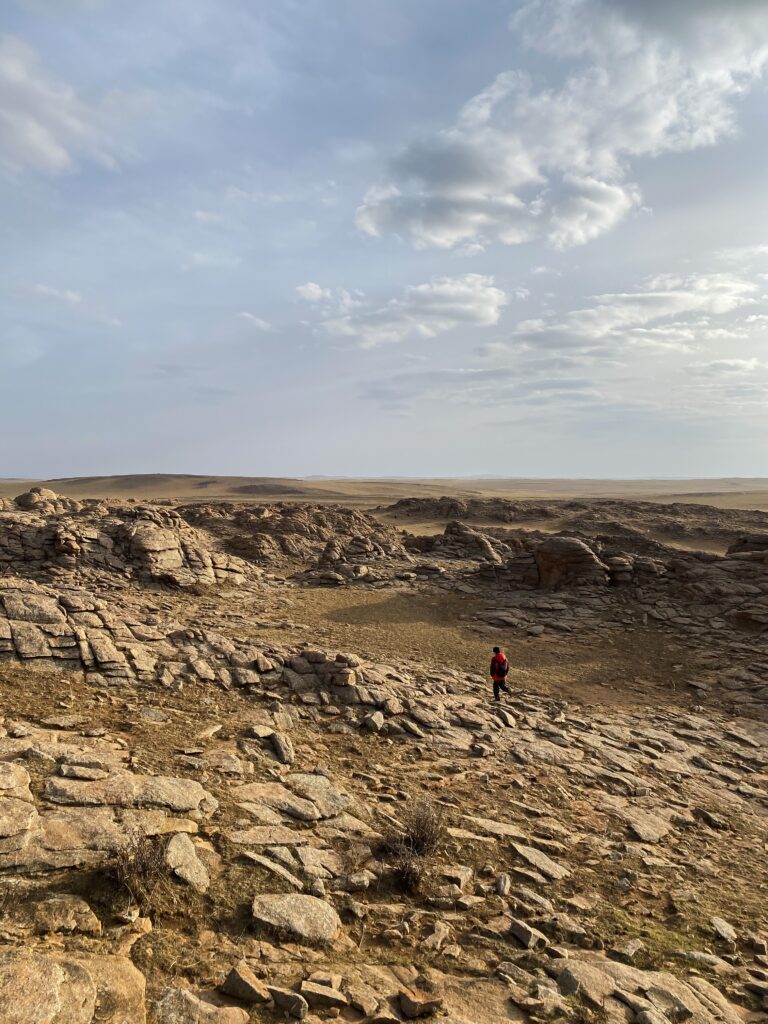
8. Enjoy Solitude
In the modern world, where solitude is often crowded out by the constant buzz of technology and the demands of daily life, a pilgrimage offers a rare and valuable opportunity to embrace solitude in its most profound and enriching form.
This journey, inherently personal and introspective, provides the space and time to disconnect from the external noise and connect deeply with oneself.
Solitude on a pilgrimage is not about loneliness; rather, it’s about finding peace and clarity within one’s own company. It’s in these quiet moments, away from the familiar distractions, that we can hear our inner voice more clearly.
This voice, often lost amidst the cacophony of our routine lives, holds insights into our deepest desires, fears, and joys. The act of walking alone, with only the path ahead and one’s thoughts for company, becomes a powerful form of meditation, a moving contemplation that can lead to profound self-discovery and inner peace.
The solitude experienced on a pilgrimage allows for a level of reflection that is rare in the hustle of everyday life. It invites us to ponder life’s big questions, to delve into the recesses of our mind and soul, and to confront the truths that lie there.
This journey of introspection is both challenging and liberating, as it forces one to face oneself squarely, with all the vulnerabilities and strengths that come to light.

9. Open Yourself Up to the Universe
Opening yourself up to the universe means being receptive to the lessons it has to offer. The pilgrimage is rich with symbols, signs, and synchronicities that, when observed with an open heart, can guide and inform your journey.
It’s about seeing the sacred in the ordinary, recognizing that every moment, every interaction, is an opportunity to learn something valuable about the world and your place in it.
This openness also allows for a deeper connection with the natural world. Immersed in the beauty of the earth, from the sweeping vistas of mountains and deserts to the intimate details of a leaf or a stone, you can’t help but feel a part of something larger than yourself.
Ultimately, opening yourself up to the universe on a pilgrimage is an act of faith—a belief in the interconnectedness of all things and the inherent goodness of the journey of life.
It’s a willingness to surrender to the flow of experiences, trusting that each step brings you closer to understanding, healing, and growth. This openness is transformative, leaving you changed not just by the places you’ve seen but by the expansion of your heart and mind.
The pilgrimage, in its essence, is a journey of becoming. By opening yourself up to the universe, you allow the journey to work its magic on you, shaping you into someone more aware, more connected, and more alive to the wonder of existence.
It’s an invitation to live fully, to love deeply, and to embrace the beauty and mystery of the journey with an open heart.

10. Heal and Let Go
This journey, undertaken with a heart open to change, provides a unique opportunity to confront and release the burdens we carry, whether they stem from past traumas, grief, or the myriad forms of suffering that mark the human condition.
Healing on a pilgrimage is both a physical and spiritual process. The act of walking, of physically moving through space, mirrors the inner journey of moving through emotional and psychological landscapes. Each step can be a step away from pain and towards recovery, a tangible manifestation of the desire to heal.
The physical exertion involved in the journey, coupled with the solace found in nature and sacred sites, facilitates a release, allowing pilgrims to shed layers of hurt and sorrow, making room for new growth and understanding.
The pilgrimage also offers the chance to let go, to release the things that no longer serve us—resentments, fears, limiting beliefs. This letting go is not an act of forgetting but of forgiving; forgiving others, forgiving life, and most importantly, forgiving oneself.
It’s about accepting our past, with all its imperfections, and choosing to step into the future unburdened. The journey encourages this process, providing countless moments of solitude and reflection in which one can confront inner demons, make peace with them, and ultimately, let them go.
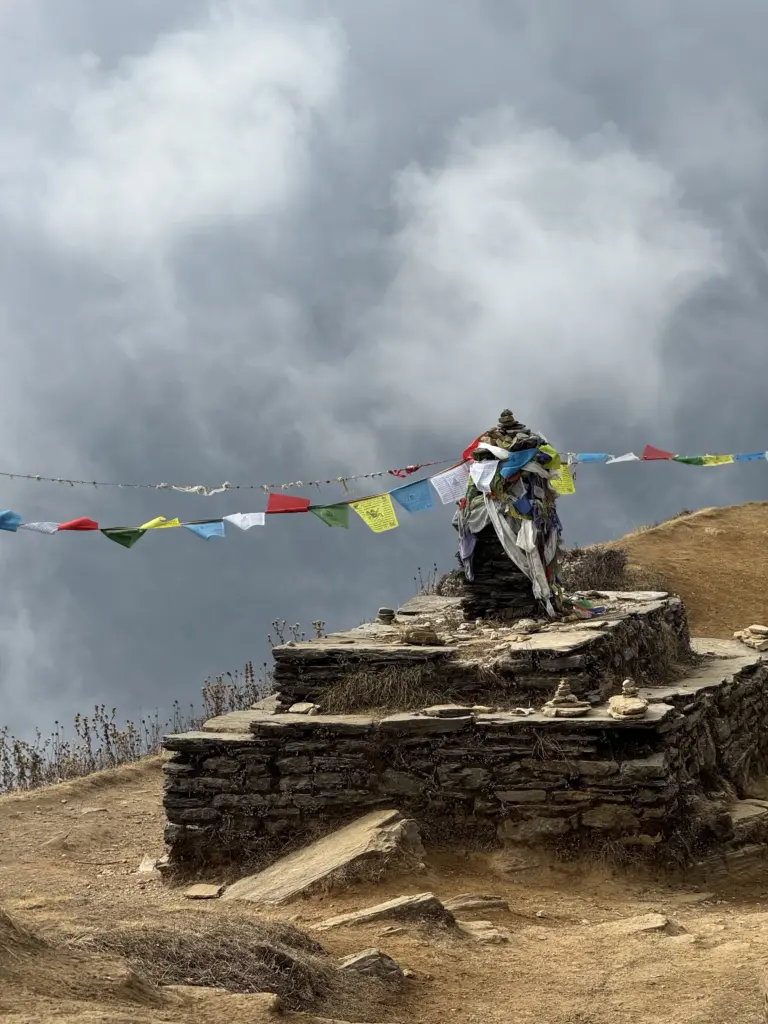
How to Go on a Pilgrimage
Going on a pilgrimage is a deeply personal journey that requires thoughtful preparation, both practically and spiritually. Here’s a guide on how to go on a pilgrimage, designed to help you embark on this transformative journey with intention and openness.
1. Define Your Purpose: Start by reflecting on why you want to go on a pilgrimage. Is it for spiritual growth, healing, seeking answers, or perhaps honoring a loved one? Understanding your purpose will guide your choices and enrich your experience.
2. Choose Your Destination: Select a destination that resonates with your purpose. It could be a place with spiritual significance to you personally or one that holds historical or religious importance. Research the history, traditions, and significance of the site to deepen your connection.
3. Prepare Physically and Mentally: Depending on the nature of your pilgrimage, physical preparation may be necessary, especially if your journey involves long walks or hiking. Equally important is mental preparation—open yourself to the experiences and lessons the pilgrimage may offer, and be ready to embrace the journey with an open heart.
4. Pack Mindfully: Bring only what is necessary, focusing on essentials. Remember, a pilgrimage is as much about the internal journey as the external one. Packing light can be a metaphor for letting go of life’s unnecessary burdens.
5. Set Intentions: Before you leave, set intentions for your journey. These can be specific goals or open-ended aspirations for what you wish to receive or discover on your pilgrimage.
6. Embrace the Journey: Once on your pilgrimage, stay present. Embrace each moment, whether it’s challenging or uplifting. The journey itself is as important as the destination. Be open to the people you meet and the experiences that come your way.
7. Document Your Journey: Keep a journal, take photos, or find a creative way to document your journey. This will not only help you process your experiences but also serve as a reminder of your journey’s lessons and transformations.
8. Reflect and Integrate: After returning home, take time to reflect on your pilgrimage. How has the journey changed you? How can you integrate the insights and transformations into your daily life?
By preparing thoughtfully and embarking with an open heart, you set the stage for a journey that can transform your understanding of yourself and the world around you.

